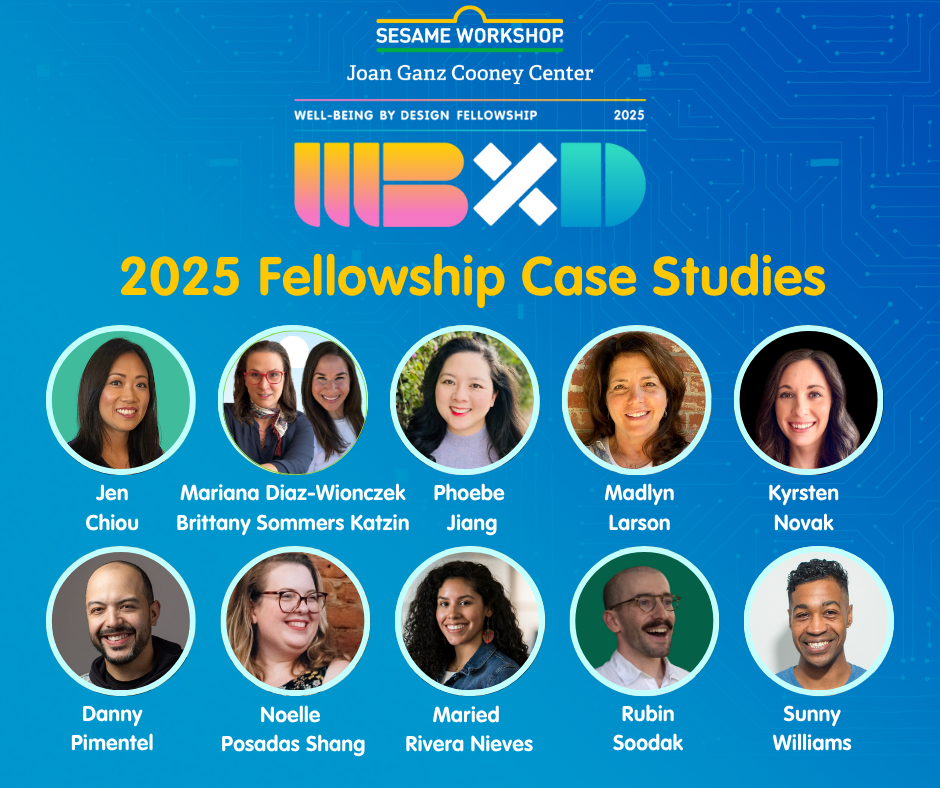
Years ago, when I was a lowly graduate research intern crunching data in Sesame Workshop’s content research department, I saw firsthand the great care with which the organization created high-quality educational media for kids.
My journey into education research started just as the internet arrived in NYC public schools, which kicked off an exciting movement that was mobilized by all kinds of new activity to make it possible to connect every school to each other and to the world beyond. To me, the biggest risk was that we’d fail to do something truly transformative for learners, most likely by falling back on familiar patterns – e.g., simply digitizing existing practices or treating “computer time” as an activity distinct from regular instruction, an add-on when the more serious work was complete. There was also an equally likely risk of inequitable distribution, which we combat to this day.
So naturally I was drawn to the Cooney Center, having spent the better part of two decades working to improve kids’ educational experience, typically by using technology as a lever to effect institutional changes such as bridging formal and informal learning, prototyping new assessment methods, introducing project-based learning, and expanding access to computing education in K-12 schools equitably and sustainably. For me, the most important innovation has always been the opportunity to center kids, which is exactly what the Cooney Center is about.

Today, our work builds upon the Cooney Center’s history of field-building research, focusing our efforts on engaging kids directly in shaping our digital world. I’m inspired daily by our opportunity to translate Joan’s original question – “can television teach kids?” – into a broader challenge: how might we leverage today’s constantly emerging media to advance kids’ learning, development, and well-being?
There is increasing public pressure for digital media producers to “do better” for kids. Our recent market analysis reveals many digital media companies are caught between capitalizing on a business model and maximizing the benefit to children. Developers say they are interested in designing for kids’ benefit, but often don’t know the answers to:
- What does “good” look like?
- How might our potential product shape kids’ learning and well-being?
- How do we ensure our product will serve a diverse range of kids?
- How do we understand kids’ needs and preferences across developmental stages and media platforms—including many that aren’t designed for kids’ use?
To incorporate new development techniques, innovators have told us they want easy access to consistent, reliable, research-based perspectives and the ability to pressure-test emerging concepts and products with diverse groups of kids. Innovators also want to know they are on the right track for promoting kids’ digital well-being and seek to explore friction in human experience earlier in the process than they currently are able to.
Kids should be part of designing their own digital futures
Our new priorities and initiatives draw from this initial inspiration:
- Enable innovators to design with and for kids. We are leveraging child-centered design practices to help industry partners build better digital media products. The Cooney Center Sandbox bridges the divide among what kids want and need in digital products, what innovators seek to develop, and what researchers know is beneficial. We engage diverse groups of young people as design partners to shape the products made for them.
- Promote children’s well-being in digital spaces. The Cooney Center is engaging partners globally in the adoption of digital well-being policies and practices by collaborating on the development of research-based definitions and indicators, practical resources, and accessible tools. Our work includes a global initiative with UNICEF and The LEGO Group to activate industry partners and policy makers, and a partnership with the Fair Play Alliance that focuses on building healthy interactions and resilient communities in online game spaces.
- Support youth voice and participation through public media innovation. Working with young people from diverse backgrounds, the Cooney Center is uncovering valuable insights on their digital media use and translating findings to engage tween and teen audiences. Our partnership with the Corporation for Public Broadcasting supports innovation, shared learning, and collaboration across the 330 public TV and radio stations. Looking ahead, we seek to deepen the system’s capacity to platform youth voice and facilitate youth civic learning experiences.

Our work to center kids in product design is not only the appropriate orientation for industry, but it’s also critical that kids are directly involved in shaping their own digital futures – an adaptation of “nothing about us without us.” Kids offer unique insights about what they want and need that only they can provide. We hope to see the widespread adoption of child-centered design methods to support a continuum “from safe to thriving,” from ensuring safety, security, and privacy, to inclusive design so all can use, to well-being as a goal state – an intentional outcome of well-design digital experience, inclusive of physical and mental health, at the level of individuals, groups, and communities.
We must also assume that technology will continue to evolve rapidly, so our methods need to be durable and adaptable to new conditions. We’re already in the midst of another big shift in the way we interact with technologies. Since the early days of the internet, we have moved from (1) simply getting content online for mass consumption, to (2) participatory media, enabling everyone to be a producer, broadcaster, and commentator, to (3) AI-driven tools, enabling more and more creative tasks to be executed entirely by machines, from works of art to academic papers. We must define appropriate and necessary roles for humans and develop new models for collaboration with computers, and kids again need to be at the forefront.
More specifically, and more Sesame-oriented: what do kids need most today, and how do we leverage today’s emerging media for their benefit? How do we build from what we know in today’s new digital spaces? This will all be a real test for the field, and we have to do it together.



